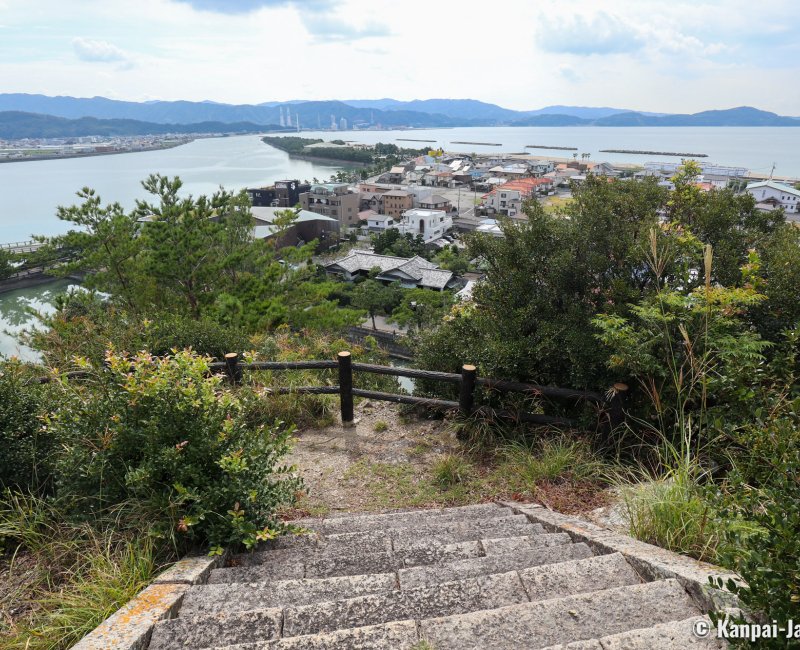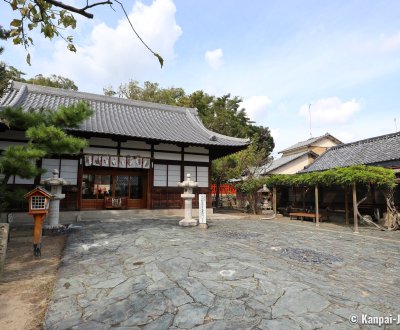Tamatsushima-jinja
Poetry Shrine in Wakayama
Tamatsushima-jinja is a Shinto shrine in Wakayama City, in the south of the Kansai area. Dedicated to the waka poem goddess and inspiration for many writers, it was designated Wakanoura Bay’s Special Place of Scenic Beauty.
Tamatsushima shrine’s precise foundation date was not recorded in any official document. However, it was first mentioned in historical accounts of the 8th century, at the occasion of a visit of Emperor Shomu (699 - 729) in the Kii Province (or Kishu, the future Wakayama Prefecture) where he was moved by the beauty of the landscape that could be seen from the shrine’s sacred enclosure. He thus ordered the preservation of Tamatsushima-jinja, that was consequently granted the protection of the Imperial Court thereafter.
Standing on a hill on the coast of Wakanoura Bay, the place indeed enjoys an unobstructed view on the seaside and the surrounding nature. The tranquil atmosphere is favorable to taking the time watching the forest-covered hills and the peaceful sea taking up the horizon. More than for its Shinto buildings, the shrine is mainly renown for this panorama, officially considered a "poetic landscape of Scenic Beauty" as soon as the Heian period (794 – 1185).
Scholars and aristocrats visited Tamatsushima-jinja from which they drew inspiration to many classical poems. The shrine is by the way dedicated to princess Soto-Orihime, considered in Japan as one of the three deities of waka poetry (Waka Sanjin). She is enshrined along with Wakahirume no Mikoto and Empress Jingu.

Mount Tengu’s observatory on the city
The shrine’s main plaza is directly accessible from the street and there is no need of a stairway to reach the worship pavilion Haiden. This configuration allows local people of all ages to often come pray the poetry goddess. Following the celebrations calendar and the yearly customs 🛂, it is frequent to meet families dressed in traditional kimonos visiting the shrine for a photo shoot.
The buildings have been reconstructed by Asano Yoshinaga (1576 - 1613) and later restored and improved by Tokugawa Yorinobu (1602 - 1671), 2 great warlords who ruled over the province in the 17th century.
Behind the main hall, the visit continues on a slightly inclined walking path (or by a stairway) going up to the vantage point of Mount Tengu 👺. Only a 5 minutes’ walk, the detour to the natural observatory is worth it, to embrace a feeling close to what olden times’ emperor and his vassals may have felt when discovering this marvelous sight. All of Wakanoura Bay’s points of interest can be seen from the top, such as Kishu Tosho-gu and Wakaura Tenmangu shrines, as well as the ancient little bridge Furobashi.

